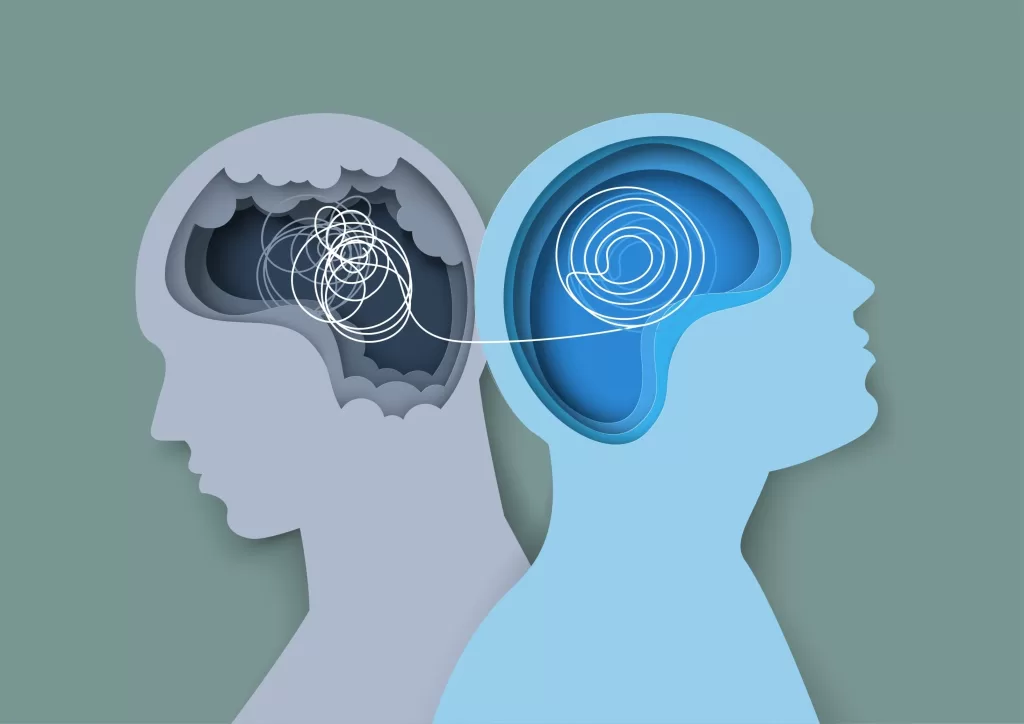Trauma Treatment in Atlanta, Georgia and Across Maryland
Traumatic events can shake the very foundation of who we are, challenging our sense of safety in the world and trust in others.
It’s time to stop letting the past dictate your future. At CAYA Care, our trauma therapy treatment will help you:
- Feel calm and in control in your daily life
- Manage triggers or flashbacks related to the traumatic event
- Identify and gently shift negative beliefs
- Gain the confidence to move beyond the limitations of trauma
Get Help Today
Please fill out the form below and one of our team members will get back to you within 24 hours.

Gain the confidence to move beyond the limitations of trauma...
Do you feel like there’s a lingering “something” from your past that keeps popping up, no matter how hard you try to move on?
Maybe it’s an experience that leaves you feeling anxious, on edge, or disconnected from those around you.
Or perhaps you can’t quite put your finger on it. You just know something feels off, and you sense that your past might be influencing your present. If you’re ready to explore this and break free from the cycle of stress and worry, you’re not alone.
Let’s take that first step together toward healing and joy!
Connect with us today for a complimentary consultation and jump start your treatment for childhood trauma.
It’s Time to Reclaim Your Strength and Confidence!
CAYA Care provides specialized online trauma therapy services for teens, young adults, and parents in Georgia, Maryland, and 42 other states.
Our trauma therapy programs are designed to help those suffering from the long-lasting effects of traumatic experiences, focusing on childhood and adult trauma recovery.
Whether it’s a recent event or past experiences that need attention, we offer a range of evidence-based treatments to facilitate healing and recovery.
We focus on trauma therapy and counseling that helps you embrace your inherent worth, value, and confidence to regain control by:
- Connecting: Here, you’ll find a safe space to express yourself openly and honestly. We prioritize establishing a genuine connection where you feel heard and understood. This bond not only fosters trust but also helps you navigate your emotions and experiences without judgment.
- Empowering: Our adult and teen trauma treatment focuses on empowering you to reclaim your voice and agency. We’ll work together to identify your strengths and develop practical tools that enable you to cope with anxiety and stress.
- Finding meaning: We’ll explore how to find meaning in your experiences, transforming pain into personal growth. Together, we’ll reflect on your journey and help you identify what truly matters to you.
Let’s walk together on the path to healing; you’re not alone. Reach out to us for compassionate trauma therapy for teens and adults.

Featured Providers

Dr. Nour Al Ghriwati

Dr. Sage Hawn

Dr. Billie Abraham

Dr. Cathy Lau-Barraco

Dr. Kelly O’Connor

Dr. Sarah Griffin

Who Can Benefit from Working with Us for Trauma Therapy?
Trauma can leave a lasting impact that touches every part of life. At CAYA Care, we understand that healing from trauma is a personal journey, and we are here to provide specialized support every step of the way.
Teen Trauma Therapy
Guiding teens to process and recover from trauma, build resilience, and find hope and confidence for the future.
Young Adult Trauma Therapy
Helping young adults navigate trauma’s impact on early independence, relationships, and self-worth, fostering a path toward healing.
Parent Trauma Therapy
Supporting parents in balancing personal healing with family life, building strength, and fostering a healthy family environment.
Imagine a life where...
- You recognize the role your past has played in your life, but you understand that your experiences do NOT define you. You’re ready to embrace a brighter future.
- You’ve moved beyond relying on relationships or achievements to validate your worth.
- You know who you are and what truly matters to you – you are ready to draft your new narrative
- You’re ready to confront the obstacles that have held you back, knowing that facing these challenges is a crucial step in your recovery journey.

Ready for Change?
Don’t let the effects of childhood trauma hold you back.
Comprehensive Trauma Treatment for Healing & Recovery
Experiencing trauma—whether in childhood, adolescence, or adulthood—can have lasting emotional, mental, and physical effects. At CAYA Care, we offer compassionate and effective trauma treatment to help individuals process and heal from distressing experiences. Whether you’re seeking treatment for childhood trauma, trauma therapy for teens, or personalized trauma therapy treatment, our expert therapists provide evidence-based care tailored to your unique needs.

Understanding Trauma & Its Impact
Trauma can stem from various life experiences, including abuse, neglect, accidents, loss, or witnessing violence. If left untreated, it can lead to anxiety, depression, PTSD, and emotional dysregulation. Research highlights the significance of early intervention:
- Over 60% of adults report experiencing at least one traumatic event during childhood (CDC).
- Children who experience trauma are 3 times more likely to develop mental health disorders later in life (National Child Traumatic Stress Network).
- Untreated trauma can increase the risk of chronic health conditions such as heart disease, diabetes, and substance use disorders (Harvard Center on the Developing Child).
Our Trauma Therapy Treatment Approach
At CAYA Care, we use evidence-based therapies to help individuals process trauma in a healthy, constructive way. Our approach includes:
- Cognitive Behavioral Therapy (CBT) for Trauma – Helps individuals reframe negative thought patterns associated with traumatic experiences.
- Eye Movement Desensitization and Reprocessing (EMDR) – A proven technique to help the brain reprocess distressing memories and reduce emotional distress.
- Trauma-Informed Therapy for Teens – Specially designed teen trauma treatment to help adolescents navigate emotions, build resilience, and develop healthy coping mechanisms.
- Treatment for Childhood Trauma – Focused therapy for individuals dealing with past childhood experiences that continue to impact their emotional well-being.


How Trauma Therapy for Teens Can Help
Adolescents experiencing trauma often struggle with:
- Emotional outbursts or withdrawal
- Anxiety and depression
- Low self-esteem
- Difficulty forming healthy relationships
Teen trauma treatment helps young individuals understand their emotions, develop coping skills, and regain a sense of security and control in their lives. Studies show that early trauma therapy can reduce PTSD symptoms by up to 73% in teens (National Institute of Mental Health).
Start Your Healing Journey with CAYA Care
Healing from trauma takes time, but you don’t have to do it alone. Whether you’re seeking trauma therapy treatment, treatment for childhood trauma, or specialized trauma therapy for teens, CAYA Care provides expert support every step of the way.
Contact us today to begin your journey toward healing and emotional well-being.
Frequently Asked Questions
A trauma is an exposure to actual or threatened death, serious injury, or sexual violence. For example, traumatic events may include serious car accidents, physical or sexual assault, combat, the sudden and unexpected death of a loved one, torture, intensive medical procedures, or abuse, including childhood or domestic abuse.
Trauma can range from a single trauma exposure to chronic, repeated exposures to traumatic events. Trauma can result in distressing changes in mood, thoughts, and behavior and may result in psychological disorders, such as posttraumatic stress disorder (PTSD).
A stressor is an event or situation that causes stress. Stressors can range from annoying everyday hassles to events that are perceived as very dangerous.
When one encounters stressors, the body’s stress response is triggered, and a series of physiological changes take place to allow the person to activate the “fight or flight” nervous system.
Over time, stress can have a negative effect on our bodies both physically and psychologically.
Some stressors can be seen as traumatic events. Even stressors that are not necessarily traumas can cause a great deal of distress and difficulty in our lives.
Examples of common stressors include financial problems, interpersonal difficulties, work demands, life events, pregnancy, injury, deadlines, competition, etc.
Trauma therapy is a form of treatment designed to help individuals recover from the psychological effects of trauma. It uses various therapeutic techniques to help people process and heal from traumatic experiences, reducing symptoms like anxiety, depression, and emotional distress.
The length of trauma therapy varies based on the individual’s needs and the severity of the trauma. Some may benefit from a few months of treatment, while others may need longer-term therapy for deeper emotional healing.
Yes, absolutely. CAYA Care offers specialized trauma therapy services for children. Our therapists use age-appropriate techniques to help children process traumatic events in a safe and supportive environment. Get in touch with us for more details on trauma therapy for teens.
Yes, trauma therapy is highly effective for teens. Our therapists at CAYA Care use a variety of techniques, including talk therapy and cognitive-behavioral methods, to help teens process trauma and develop healthy coping mechanisms.
If your child or teen is showing signs of emotional distress, such as withdrawal, anxiety, anger, or changes in behavior, they may benefit from trauma therapy. Our team at CAYA Care can provide an assessment to determine if teen trauma treatment is necessary.
CAYA Care treats a wide range of trauma, including childhood trauma, emotional abuse, physical abuse, bullying, and other traumatic life events. Our trauma therapy treatments are tailored to the specific needs of everyone, ensuring a comprehensive and supportive approach to recovery
If you’re going to get the most out of therapy, it’s important that you’re working with the therapist who’s right for you. That’s why we offer a free consultation. Click this link to schedule yours, and we can discuss who from our team is the best to help you reach your goals!
Latest Blogs
Healing From Trauma: Your Path Forward with CAYA Care
Understanding Anxiety: Signs, Symptoms,...
Understanding Depression: Signs, Causes...
When to Seek Professional...






